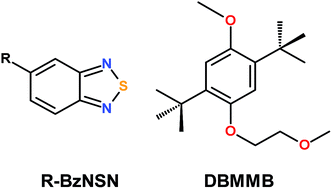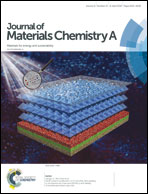Substituted thiadiazoles as energy-rich anolytes for nonaqueous redox flow cells†
Abstract
Understanding structure–property relationships is essential for designing energy-rich redox active organic molecules (ROMs) for all-organic redox flow batteries. Herein we examine thiadiazole ROMs for storage of negative charge in the flow cells. These versatile molecules have excellent solubility and low redox potentials, allowing high energy density to be achieved. By systematically incorporating groups with varying electron accepting/withdrawing ability, we have examined substituent effects on their properties of interest, including redox potentials, calendar lives of charged ROMs in electrolyte, and the flow cell cycling performance. While the calendar life of energized fluids can be tuned in a predictable fashion over a wide range, the improvements in the calendar life do not automatically translate into the enhanced cycling performance, indicating that in addition to the slow reactions of charged species in the solvent bulk, there are other parasitic reactions that occur only during the electrochemical cycling of the cell and can dramatically affect the cycling lifetime.



 Please wait while we load your content...
Please wait while we load your content...
